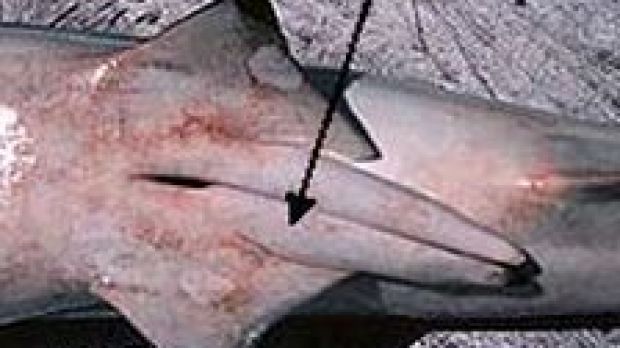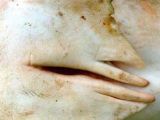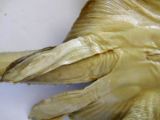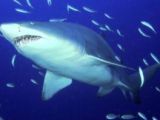Snakes and lizards may have double penises.
But this is not a trait exclusive for them.
Because sharks too possess a double penis.
First, what is strange in this case is that the sharks and their relatives, rays and skates (which are nothing more than flattened sharks) have a penis and an internal fecundation.
All other fish species have an external fecundation (like we see in most frogs and toads), in which a penis would be useless. (the sole exception amongst the bony fish is the Poeciliidae family and some related species, tiny tropical species, some very common in fish tanks, like gupy, molly, platy, swordtail).
This does not mean that all sharks will give birth to living offspring, some lay eggs (like all rays, skates, Port Jackson shark, catsharks, houndsharks).
But all the large species that are potentially dangerous for people give birth to living offspring.
The two penises of the shark are named claspers (or pterygopodia) and develop based on the anterior region of the ventral flippers.
The name "claspers" is somewhat misleading as they do not serve for holding on to the female, but play the role of the mammalian penis.
Each of the two penises has inside a cartilaginous support and a groove on their inner edge.
Unlike the case of the double penis of the snakes and lizards, where each of the penises functions alone like a sole penis by itself, in the shark's case, they approach each other and unite during the copulation, forming a channel through which the sperm liquid is eliminated.
Sharks are very elusive when mating.
In small species, like catfish, males were seen curled around the females.
Less flexible species were seen in a parallel position, with the male introducing a clasper in the female's oviduct.
Females in large species (like great white) bear bite marks that seem to be inflicted by mating males, in order to get a grip for maintaining position.
On the gill area, females present a thickened skin, to withstand the bites (as seen in great white shark female).
Probably the weirdest and most interesting trait in shark reproduction is the intrauterine cannibalism, found in some live bearer species.
While a part of the live bearer presents a placenta like in mammals, others do not.
In this case, the offspring are fed by the yolk of their egg and by nutrients secreted by the walls of the oviduct.
In other variant, the first embryos to hatch eat the other eggs found in the oviduct, a phenomenon named oophagy (like in great white shark, mako sharks, thresher sharks, basking shark).
The intrauterine cannibalism goes much further: they consume developing embryos, like in sand tiger sharks.
All this passes inside the womb of the mother!
This strategy makes the young able to get a large size before being born, being this way less exposed to predators (mostly to other sharks).

 14 DAY TRIAL //
14 DAY TRIAL // 



